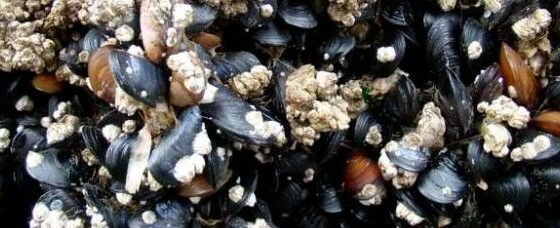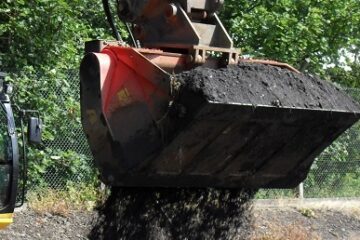We’ve recently been looking at ways to deal with TBT pollution and although it used to be a big environmental concern it’s an issue which doesn’t seem to be getting much coverage these days. Tributyltin (TBT) is the active ingredient in a wide range of fungicides in preservatives for wood, textiles, paper, leather, plastics and packaging it is also used as a highly effective bio-cide in anti-fouling coatings for the hulls of ships and other marine infrastructure such as buoys. Fouling is the term for unwanted plants or animals which grow on the hulls of boats. TBT is highly toxic to a great deal of marine life including microalgae, molluscs and crustaceans, fish and some invertebrates. It is encountered in higher concentrations in marine sediments in areas with lots of boats such as marinas and harbours and tends to affect bottom dwelling and filter feeding creatures but has been shown to bio-accumulate in other fish and even mammals.
In terms of environmental impact, TBT from anti-fouling coatings has been linked to high mortality of oyster larvae and abnormalities off the west coast of France in the 1970’s and the decline of the Dog Whelk in south west England in the 1980’s. Malformations have been reported in a number of other species and immunological impacts have been noted in some fish.
The exact mode of action of the coatings varies a wee bit depending upon the product used but essentially there needs to be some degree of leaching of the bio-cide from the paint into the surrounding water to make it available to the life forms which would otherwise adhere to and grow on the hull of the boat. This means that TBT is released into the environment and, although initially expected not to be, it’s very persistent in the environment. TBT and associated compounds will be broken down by exposure to light and oxygen but tend to adhere to particles in the water column and then accumulate in silt deposits where there is little light and not much oxygen.
So why use them? Well, TBT containing coatings are by far the most effective anti-fouling chemicals ever developed and unprotected vessels may gather up to 150kg of fouling per m2 in 6 months. To put this into context a Very Large Crude Carrier could have 40,000m2 underwater surface which translates to 6,000 tonnes of unwanted mass. This massively increases drag and can increase the fuel consumption by 40-50%. When scaled up to account for shipping world wide this becomes a significant amount of money and an environmentally significant volume of fuel. Not to mention the potential environmental impacts of invasive species hitching a ride around the world on ship hulls. Anti-fouling is simply necessary if we’re to have a global shipping industry.
As a result of the environmental concerns about TBT compounds their use was banned in anti-fouling coatings in an International Maritime Organisation (IMO) convention of 2001 which came into force in 2008. This was the culmination of restrictions which began in the 1980’s. It is estimated that 83% of the worlds merchant fleets (measured in tonnage) are registered to nations which have ratified this convention. Alternative coatings are now widely available, usually based on other metal compounds. However in nations with poor regulation the use of TBT continues and due to it’s persistence in the environment TBT contamination will remain a concern for the foreseeable future.
We’re currently developing techniques to remove TBTs from contaminated water which could greatly reduce disposal costs from their current high levels. If you’d like to learn more about this please call us on 0131 538 8456.







Leave a Reply